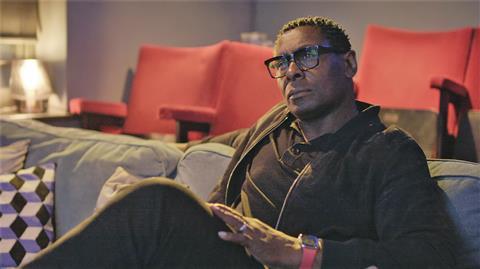“An excellent documentary, way overdue”

“Perhaps the best moment was when Olusoga showed 1896 film footage of white people in blackface performing on a London street before working-class boys (black people were played as “happy-go-lucky simpletons” or “savages in Africa”) and made a profound point. He remarked that these boys would be in their sixties when the Windrush generation arrived. This is what black people were to them. It was propaganda more powerful than any politician could achieve. Yet until quite recently it was classed as “harmless fun”. When I was at primary school (no black pupils) we once dressed as the Black and White Minstrels for the summer fair. I thought nothing of it. An excellent documentary, way overdue.”
“The documentary’s strengths come from showing the myriad ways the seed of blackface grew over the decades and by confronting how generations of white people were fed insidious stereotypes. For young Black men of Harewood’s generation, some scars remain from figuring out their Black identity while being inundated with minstrelsy. In one of the most moving moments, Olusoga projects a film of Victorian street performers dancing in blackface to delighted crowds. Beyond showing how commonplace the present taboo was, Olusoga points out: “It’s art, and art isn’t a cherry on the cake of life. It is life. And this is racism literally made into an art form.” But worse yet, he points out the smiling children in the footage absorbing the idea that Black people are “either savages in Africa or happy-go-lucky simpletons in America”. These children will form the generation that would “welcome” the Windrush generation to Britain’s shores.”
Leila Latif, The Guardian
“The one surprise was that Harewood did not interview Lenny Henry, who appeared on The Black and White Minstrel Show and has spoken of his discomfort. But it was otherwise a well-made film providing food for thought.”
Anita Singh, Telegraph
“It didn’t avoid any of the difficult parts as the Homeland actor investigated the history of minstrel entertainers. He traced the trend back to the early Victorian era, all the way through to the execrable Black And White Minstrel Show — an abomination the Beeb could be forgiven for wanting to forget. But he was unable to interpret his discoveries with any historical perspective. He couldn’t get over his shock that people in the past saw nothing wrong with singers and clowns in blackface.
Christopher Stevens, Daily Mail
Good Omens, Amazon
“It’s broader than a slap across the head with an animal balloon and sillier than Teletubbies face-planting on a whoopee cushion. But the infectious quality of the original novel is preserved. In 1990, few could have predicted the book would have such a loyal following all these decades later. With season two, Good Omens carries on into the afterlife with glorious chutzpah and an absurdity that sinks its hooks in with glee.”
Benji Wilson, Telegraph
“For season two there is no more book to dramatise, so the makers are free to play to series one’s strengths. Good Omens 2 is more the Tennant and Sheen Show than ever. If it’s not sure what else it is, perhaps that doesn’t matter.”
Jack Seale, The Guardian
Only Murders in the Building, Disney+
“There is much more suspension-of-disbelief required this time round, even discounting the sheer amount of murders that have taken place in the building in three short years. Perhaps the oddest lacuna in this year’s case is the police. For about two thirds of the series the NYPD are entirely absent, yet a famous man has been very publicly murdered. But then in some ways OMITB is a paean to theatre and the leaps of faith it requires. The play’s the thing, and when you’re having this much fun, the show says, who’s going to get pernickety about plotholes?”
Benji Wilson, Telegraph





























No comments yet